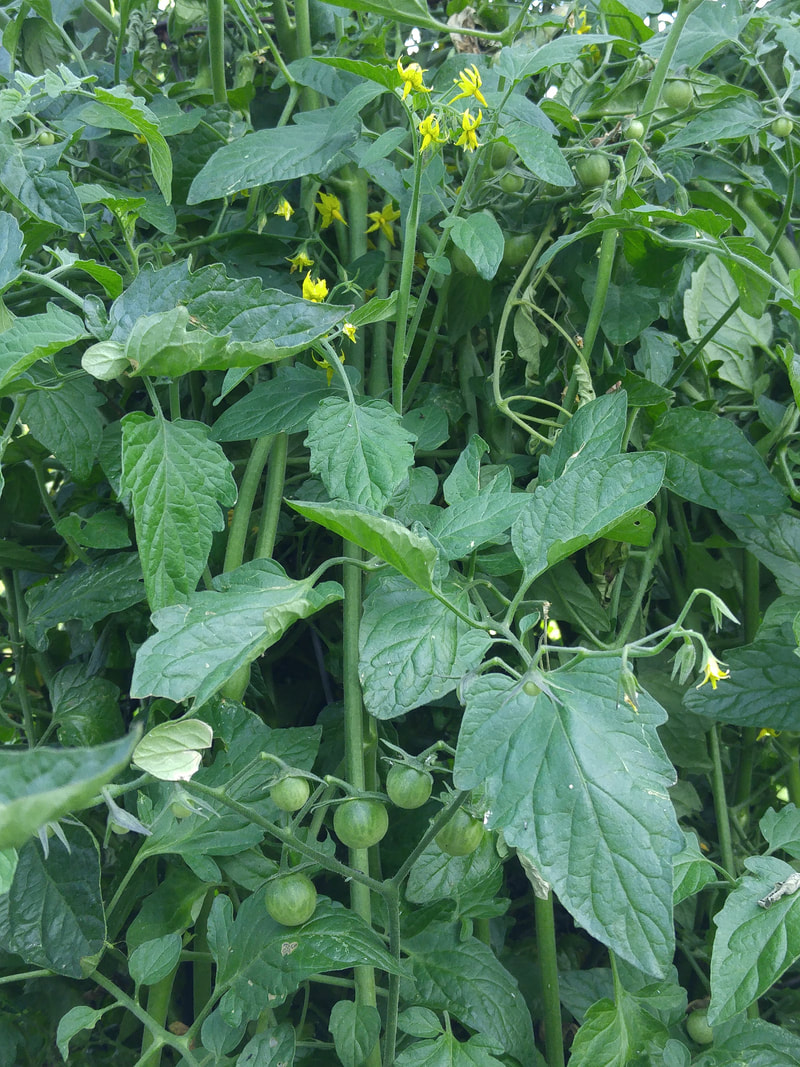Dare I suggest that another planting of tomato and pepper transplants and bean, cucumber and squash seeds might be a good idea, betting on the possibility of this coolness extending another couple of weeks or even a month so they can get established before the “real” heat of summer arrives?
I’ve enjoyed my first crookneck squash and am waiting for my first ripe Sungold cherry tomato. Been through the peas and continuing to enjoy the lettuce. Two purple chard plants in day-long sunny spaces sent up their seed stalks to 10 feet before I saved some mature seed and moved the bushes to the compost pile in one-foot chunks. The other chard, green and white, in a somewhat shady area, is still producing huge but tender leaves.
What Tomatoes Need NowTomato plant blossoms are pollinated by breeze, so jostle the foliage every day or so to enable the pollen to transfer thoroughly. It’s easy to do when you’re tucking new growth back into their cages – you’re doing the moving just like the breeze.When blossoming starts, provide plants with another batch of soluble fertilizer. The amount you provided when first transplanting enabled the plant to establish extensive root systems and upper-plant foliage. Now that the next stage of production has begun with the blossoms, give plants another feeding that will enable fruit to form and enlarge and ripen.Continue watering deeply to enable roots to continue “chasing” the water downward to keep the plant well-supplied even through the very hot weather to come. Watering shallowly (to only about 4 inches) may have seemed sufficient until this point, but once the heat comes, those shallow roots will bake and be unable to support the plant and its fruit.Don’t prune or remove tomato plant foliage. Our area has dry air and breezes that provide good air circulation to keep diseases from settling on the plants, and our bright sun requires the foliage to protect tomato fruits from sunburn.

I remember that last Spring’s weather was coolish for a long time, but it seems that this year’s coolness has lasted longer, now that it’s already June. Daytime temperatures are up into the mid 80s, but with night-time temperatures still down in the low 60s, summer veggies like tomatoes and squash have thrived.
CATEGORIES:
Tags:
No Responses